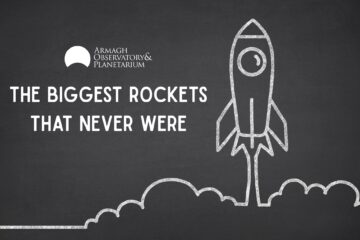When the first astronauts came back from the Moon more than half a century ago, they brought back a scientific treasure trove of soil and rock samples. These were – and still are – intensely scrutinised in laboratories all over the world, allowing scientists to gradually piece together the history of our solar system, how it formed and evolved since its beginning four-and-a half billion yr ago.
A lesser known fact is that the Soviet Union, America’s space rivals at the time, also brought samples back from the Moon, by sending out a series of sampling robots. The first mission from the late-series Luna probes, as these were called, was Luna 16 and took place 50 yr ago this September.
There were three successful missions in the series, bringing back a sum total of about a quarter kilo of lunar pebbles and soil. Though meagre in quantity compared to the hundreds of kg returned by Apollo, these “Soviet’’ Moon samples allowed scientists to investigate the Moon in more locations than the six sites sampled by the Apollo astronauts.
Luna 16 was a large spacecraft, standing 4 meters high and weighing just under 6 tons fully fueled. It was made up of two separate modules. The bottom part held the rocket engines that would slow down the stack to a soft landing on the Moon; it also hosted an array of instruments to aid the sampling operation, including a camera and a drill that would dig into the soil. The top part would do the job of lifting off from the Moon and returning the samples to Earth. This so-called ascent stage held a spherical capsule that would protect the samples during the return trip and final fiery passage through the Earth’s atmosphere.
A Proton rocket carrying Luna-16 lifted off from the Baikonur Cosmodrome in Kazhakstan on 12 September 1970 and, following a 5-day flight, entered lunar orbit on the 17th. Over the coming days the spacecraft fired its thusters to lower its orbit in preparation for landing. At around 6am BST on 20 September, Luna 16 ignited its main engine to cancel its orbital velocity and fall straight down towards the surface. Six minutes later, the spacecraft stood safely on the Moon on the edge of the Sea of Fertility, an ancient lava plain near the western limb of the Moon’s disk as seen from Earth.
The Soviet robot almost immediately began its work. After the drill dug down to 35 cm, a sample of about 100g of lunar soil was scooped up and transferred into the ascent stage capsule. The spacecraft then marked time on the surface until the right moment for the return to Earth. Due to a quirk of celestial mechanics, it so happened that, at a certain time of the month, a body lifting off straight up from Luna 16’s landing location was bound to reach the Earth a few days later without the need for course corrections, a fact that Soviet engineers exploited on this occasion and also in subsequent sampling missions.
Using the descent stage as a launch pad, the ascent stage took off from the Moon a day after landing, on the 21st September. Three days later, the capsule containing the moon samples travelling at a speed of 11 kilometers per second reached the Earth and was slowed down by friction with the atmosphere, finally parachuting down in central Kazakhstan at 06:30 BST on 24 September, returning almost precisely to its point of origin 12 days after launch.
Interestingly, three grains of soil from the Luna 16 sample weighing just 0.2 grams were sold in a 2018 auction at Sotheby’s in New York for $855,000, setting the going price for lunar material at $4.3 million per gram.
The successful conclusion of Luna 16’s mission marked the first ever recovery of a sample from an extraterrestrial body by an automated probe. Thirty year later, in 2010, NASA’s Lunar Reconnaissance Orbiter flew over the landing site and spotted the Luna 16 descent stage still resting on the surface, a monument to the scientists and engineers who achieved this remarkable feat a little more than a decade into the space age.
Additional links:
OTD in space: Sept 20 – Luna 16 lands on the Moon
StackExchange -> Space Exploration: How did the Luna spacecraft collect samples of the moon and containerize them for return to Earth?



0 Comments